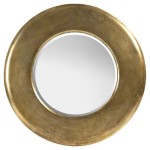Is Mirror Tint Legal in Missouri?
Missouri law regulates the tinting of vehicle windows to ensure driver visibility and public safety. Understanding these regulations is crucial for vehicle owners to avoid potential fines and ensure compliance.
The legality of window tint in Missouri hinges on Visible Light Transmission (VLT), which represents the percentage of light that can pass through the tinted window. Higher VLT percentages indicate greater light transmission. Missouri law specifies different VLT requirements for various vehicle windows.
For multi-purpose vehicles (MPVs), including vans, SUVs, and pickup trucks, the windshield must allow more than 70% VLT. The front side windows, those adjacent to the driver and front passenger, must also permit over 70% VLT. Back side windows and the rear window have no VLT restrictions, meaning any darkness of tint is permissible.
Passenger cars, excluding MPVs, follow slightly different regulations. The windshield must maintain a VLT of over 70%, identical to the requirements for MPVs. However, the front side windows must allow more than 35% VLT, offering slightly more tinting options compared to MPVs. Similar to MPVs, the back side windows and the rear window have no VLT restrictions.
While the law does not explicitly use the term "mirror tint," it addresses reflectivity. Missouri regulations stipulate that no window film can be applied to a vehicle's windows that creates a mirrored or metallic appearance. This effectively prohibits the use of highly reflective tints regardless of their VLT.
Medical exemptions exist for individuals with specific light sensitivity conditions. With appropriate medical documentation, individuals can apply for an exemption permit allowing for darker tints than normally permitted. The exemption permit must be carried in the vehicle and presented to law enforcement upon request. It is important to note that even with an exemption, fully mirrored or metallic tints remain prohibited.
Law enforcement officers utilize specialized equipment to measure the VLT of window tints. If a vehicle's window tint is found to be in violation of Missouri law, the driver may be issued a citation and fined. The vehicle owner may also be required to remove the non-compliant tint.
Several factors beyond VLT and reflectivity can impact the legality of window tint. The color of the tint is also regulated. Red, amber, and yellow tints are prohibited on any vehicle window. These colors can interfere with the visibility of other drivers and potentially create confusion with traffic signals.
Dual side mirrors are mandatory for vehicles with tinted rear windows that obstruct the driver's clear view. This requirement ensures that even with a darkly tinted rear window, the driver maintains adequate visibility of surrounding traffic.
Certain types of window tint, such as those containing metallic particles, can interfere with radio frequency reception, including signals used for GPS, cell phones, and toll collection systems. While not directly related to the legality of the tint itself, these interferences can pose practical challenges for drivers.
It’s important to note that local ordinances may exist in addition to state law. While Missouri state law provides the baseline for window tint regulations, individual cities or counties may have stricter rules. Checking local ordinances is a crucial step in ensuring full compliance.
Professionally installed window tint often comes with a warranty. This warranty can cover issues such as bubbling, peeling, or color fading. It is advisable to retain documentation of the warranty and installation in case future issues arise.
Before having window tint installed, it is recommended to discuss the Missouri regulations with the installer. A reputable installer will be knowledgeable about the state's laws and can advise on compliant tint options. They can also provide information about the specific VLT and reflectivity of different tint products.
Maintaining compliance with Missouri’s window tint regulations is a responsibility of all vehicle owners. Understanding the specific VLT limitations and reflectivity restrictions ensures driver safety and avoids potential legal issues. Properly installed and legal window tint can offer benefits such as reduced glare, interior heat reduction, and increased privacy without compromising visibility and safety.

Missouri Tint Laws 2024 Updated Car Tinting

Window Tinting Laws And Tint Percentages Missouri 816 680 4380 Kansas City

Missouri Tint Laws Everything You Need To

Kansas Missouri Car Window Tint Laws Comparison Auto Glass

Missouri Tint Laws 2024 A Comprehensive Guide For Drivers

Missouri Window Tint Law Tinted Windows Tints
All To What Degree Have Those Who Tinted Their Windows Had Installed Irregardless Of Your Particular States Laws Ford Shelby Gt500 Forum

Missouri Window Tint Law Tintcenter Com

Missouri Tint Laws Low Offset

Customize Your Window Tint With These Specialty Options World








